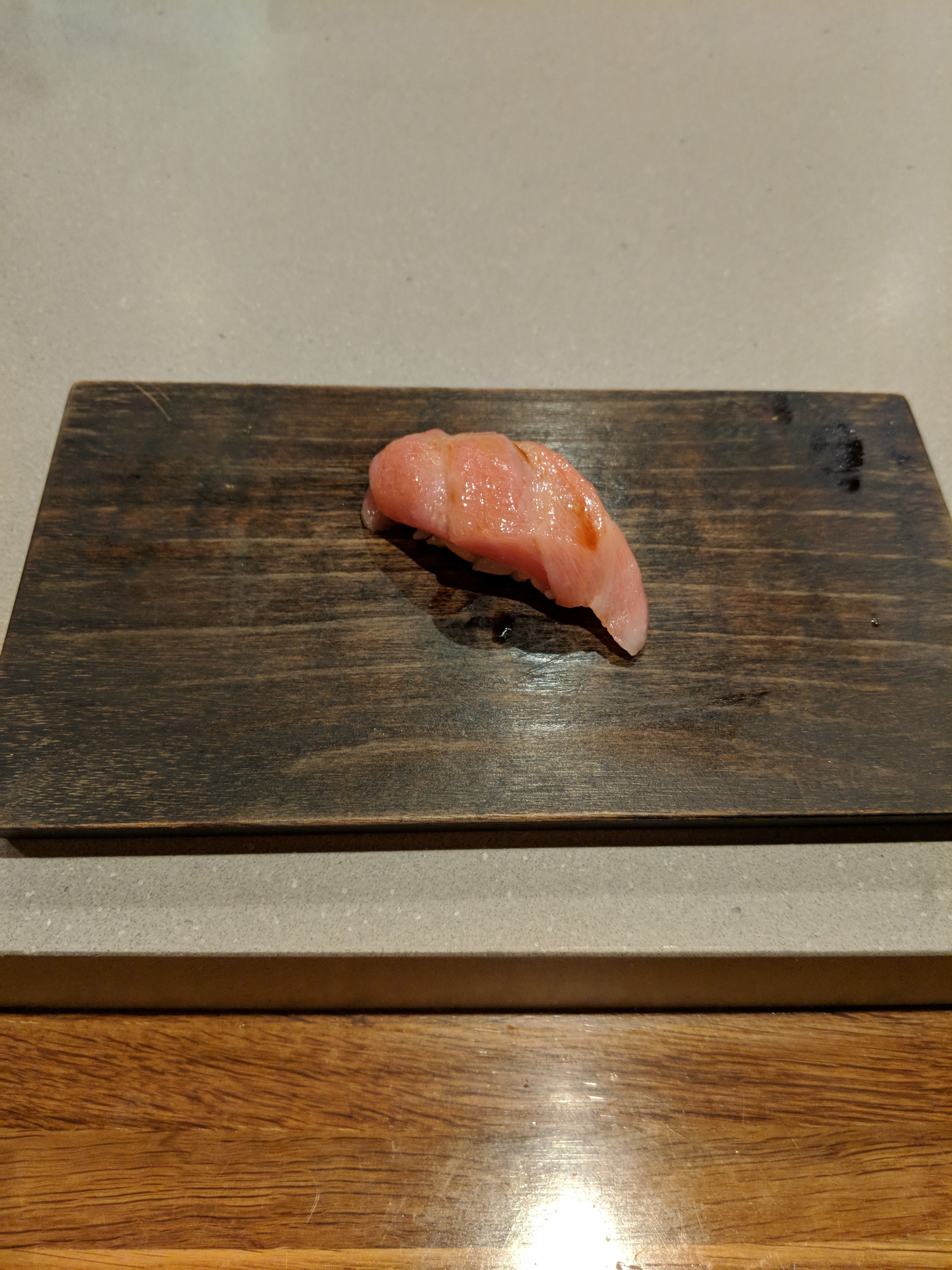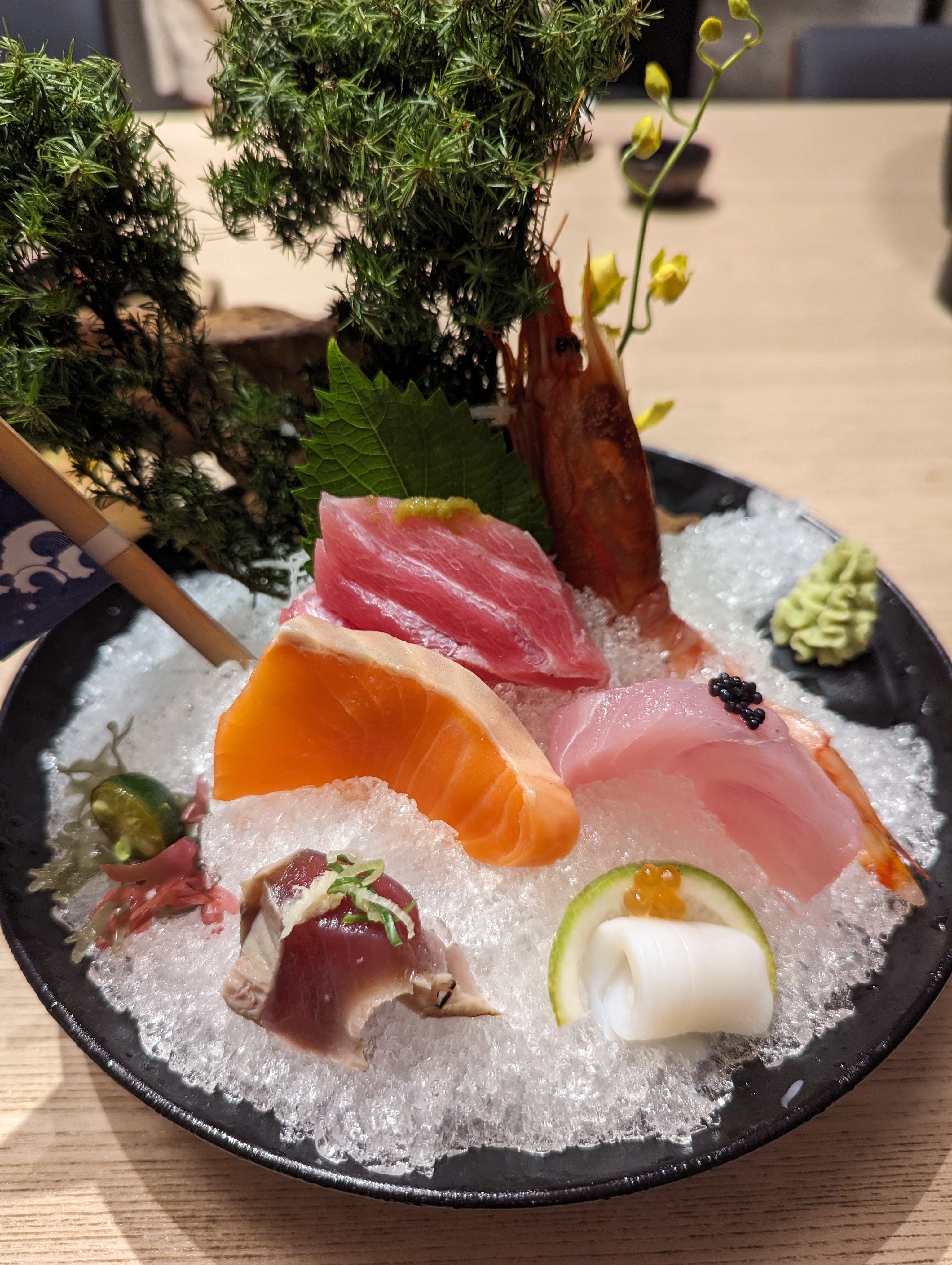
Guide to Singapore's best sushi
Welcome people. Today, we’re delving into the fascinating world of sushi in Singapore, including a look at sushi’s history in Singapore, why sushi is pricy on this island, the bustling landscape of sushi joints in Singapore and my personal recommendations and blacklist.
Whether you’re a seasoned sushi lover or just starting your culinary adventure, this is your ultimate guide.Join us as we explore sushi in Singapore, answering questions, sharing insights, and providing recommendations for an unforgettable culinary experience.
How sushi was brought into singapore
The introduction of sushi to Singapore is intertwined with the city-state’s rich history of embracing diverse culinary influences. Sushi made its debut in Singapore back in the 1980s when the local dining scene started to open up to international flavors. Initially introduced by pioneering Japanese chefs, sushi gained popularity as Singaporeans developed a taste for this unique Japanese delicacy. Over the years, the demand for authentic and high-quality sushi has grown, leading to an influx of skilled sushi chefs and specialty restaurants. The globalization of cuisine, increased travel, and a growing appreciation for different culinary traditions have all played a role in establishing sushi as a beloved and integral part of Singapore’s vibrant food culture. Today, you can find a wide range of sushi establishments across the island, catering to diverse preferences and ensuring that sushi remains a staple in Singapore’s culinary landscape.
One of the trailblazers in introducing sushi to Singapore was Sushi Tei, which opened its doors in 1994. Situated at the then-relatively new Holland Village, Sushi Tei quickly gained attention for its diverse sushi offerings and authentic Japanese dining experience. Their signature dish, the Salmon Sashimi, became an instant hit, setting the standard for fresh and quality seafood in the local sushi scene. This pioneering establishment played a crucial role in shaping Singaporeans’ perceptions of sushi, paving the way for the multitude of sushi joints that followed. As a result, Sushi Tei holds a special place in the history of sushi in Singapore, leaving an indelible mark on the city-state’s culinary landscape. To be fair, I think Sushi Tei is bang average but everyone has their own opinions.
Why do people like eating sushi in singapore?
A few reasons to why
- Culinary Diversity: Singapore is known for its diverse food culture, and sushi offers a unique and distinct culinary experience. The variety of flavors, textures, and presentations contribute to its popularity.
- Global Influence: Singapore is a cosmopolitan city with a strong influence from various cultures, including Japanese cuisine. The global popularity of sushi has made it a sought-after dish in many international culinary scenes.
- Healthy Eating: Sushi, particularly nigiri and sashimi, is often perceived as a healthy option. The use of fresh fish, vegetables, and rice can align with people’s preferences for nutritious and well-balanced meals.
- Social and Culinary Experience: Eating sushi is often considered a social activity. The tradition of sharing a plate of sushi with friends or family enhances the dining experience. Additionally, the artistry involved in sushi preparation adds to the overall culinary experience.
- Adventurous Palates: Singaporeans generally have adventurous palates and are open to trying a variety of cuisines. Sushi, with its unique combinations and use of raw fish, caters to those seeking new and exciting flavors.
- Symbol of Luxury: Sushi is sometimes associated with luxury and sophistication. People may indulge in sushi for special occasions or as a treat, contributing to its popularity as a premium dining option.
 |
|---|
| Ebi |
Average price of sushi
The average price of sushi in Singapore can vary widely depending on several factors, including the type of establishment, the quality of ingredients, and the overall dining experience. Here’s a general breakdown:
- Casual and Conveyor Belt Sushi: In more budget-friendly or casual sushi places, such as conveyor belt sushi restaurants like Sushiro or Genki Sushi, prices can start at around SGD 1.50 to SGD 3 per plate. Customers typically pay per plate, and the overall cost depends on the number and type of plates consumed.
- Mid-Range Sushi Restaurants: In mid-range sushi restaurants, where the focus is on a balance between quality and affordability, prices for a sushi set or per piece can range from SGD 3 to SGD 8. These establishments may offer a more extensive menu and higher-grade fish.
- High-End Sushi Restaurants: Upscale or fine-dining sushi restaurants in Singapore, known for premium ingredients, skilled chefs, and an elevated dining experience, can have prices that start from SGD 100 per person and can go much higher. Omakase experiences, where the chef curates a personalized menu, often come at a premium.
Which brings us to the point…
Why is sushi so expensive in singapore?
The cost of sushi in Singapore, especially in higher-end establishments, can be attributed to several factors:
- High-Quality Ingredients: Premium sushi restaurants in Singapore often prioritize using high-quality and fresh ingredients. The cost of sourcing top-notch fish, seafood, and other components contributes significantly to the overall expense.
- Skilled Chefs: Authentic and skillfully crafted sushi requires experienced and trained chefs. The expertise and precision involved in preparing sushi contribute to the labor costs, impacting the final price.
- Imported Ingredients: Many sushi ingredients, especially certain types of fish, are imported to ensure authenticity and quality. Importing these items incurs additional costs in terms of logistics, taxes, and quality control.
- Ambiance and Dining Experience: Upscale sushi establishments in Singapore often invest in creating a sophisticated ambiance and providing an enhanced dining experience. This includes factors like interior design, attentive service, and attention to detail, which contribute to higher operating costs.
- Limited Seating and High Demand: Exclusive sushi restaurants may have limited seating to maintain an intimate and exclusive atmosphere. High demand for these sought-after dining experiences can drive prices up.
- Rental and Operational Costs: Prime locations and well-designed spaces come at a cost. Sushi restaurants in premium areas of Singapore face higher rental and operational expenses, which are reflected in the menu prices. This is the main reason
- Customization and Innovation: Some upscale sushi places focus on offering unique and innovative sushi creations. The research, experimentation, and customization involved in creating distinct flavors and presentations contribute to the overall cost.
- Sustainability Practices: Sushi restaurants committed to sustainable and responsible sourcing practices may incur additional expenses to support environmentally friendly fishing and farming methods.
While there are more affordable sushi options in Singapore, the higher prices in certain establishments are often justified by a commitment to quality, craftsmanship, and an elevated dining experience.
Top qualities of a sushi restaurant
When searching for a sushi restaurant, certain key qualities contribute to a memorable dining experience. Here are the top qualities to consider:
- Fresh and High-Quality Ingredients: Choose a sushi restaurant that prioritizes fresh and high-quality ingredients to ensure the best flavors and textures
- Diverse Sushi Menu: Opt for restaurants with a diverse sushi menu, offering a wide range of options to suit different preferences, including sashimi, nigiri, and specialty rolls
- Clean and Inviting Ambiance: A clean and inviting ambiance enhances the dining experience. Seek restaurants with a pleasant atmosphere and well-maintained interiors
- Omakase Options: Consider places that offer omakase, allowing the chef to curate a personalized sushi experience, showcasing their creativity and the freshest ingredients available
Top things to order to assess a sushi restaurant
When exploring a sushi restaurant in Singapore, ordering specific items can help you assess the establishment’s quality and expertise. Here are some top things to order:
- Salmon (Sake) Sashimi: Opt for a plate of fresh salmon sashimi. Assess the color; it should be vibrant with a slight translucency. The texture should be firm, and the flavor should be clean and buttery. High-quality salmon should melt in your mouth.
- Tamago (Sweet Japanese Omelette): Tamago is a simple yet crucial dish. Its preparation reflects the chef’s attention to detail and mastery of traditional sushi elements
- Uni (Sea Urchin): Uni is a delicacy that showcases the restaurant’s access to high-quality and exotic ingredients. The taste and freshness are key indicators
- Wasabi and Soy Sauce: Pay attention to the quality of wasabi and soy sauce provided. Freshly grated or prepared wasabi and high-quality soy sauce enhance the overall experience
- Miso Soup: While not directly sushi, miso soup can reflect the overall attention to detail in the restaurant’s preparation of traditional Japanese dishes
List of popular singapore sushi restaurants that I visit
Most Affordable
- Sushiro: Known for its conveyor belt sushi concept, Sushiro offers an affordable yet enjoyable sushi dining experience. With a variety of sushi options passing by on the conveyor belt, patrons can conveniently pick and choose their favorites
- Genki sushi: Another popular chain all around Singapore
Mid-Range
- Fat Cow: Renowned for Wagyu beef, Fat Cow also features an excellent sushi menu, including fresh sashimi and sushi options.
- Sushi Mitsuya: Sushi Mitsuya emphasizes the art of simplicity, offering a quiet and elegant setting for patrons to savor exquisite sushi creations.
High-End/Expensive
- Sushi Jiro: With its roots in Tokyo, Sushi Jiro in Singapore offers an omakase experience, focusing on the simplicity and perfection of each sushi piece.
- Aoki Japanese Restaurant: Known for its Edomae-style sushi, Aoki is prepared by skilled chefs using premium ingredients imported from Japan.
- Sushi Kimura: Emphasizing the art of traditional Edo-mae sushi, Sushi Kimura features a serene ambiance and a chef’s selection menu highlighting the day’s freshest catches.
- Ki-sho: Ki-sho is a fine-dining Japanese restaurant that excels in sushi craftsmanship, presenting a blend of traditional and modern flavors.
- Shinji by Kanesaka (Raffles Hotel): Renowned for its authentic Edomae-style sushi, Shinji by Kanesaka offers a premium dining experience with a focus on the finest seasonal ingredients.
- Hashida Sushi Singapore: Celebrated for its omakase menu, Hashida Sushi showcases the chef’s mastery in crafting sushi with precision and creativity.
Of course, sometimes I can’t go wrong with sushi near me or sushi close to me, but you’re paying for convenience versus prime quality (usually).
 |
|---|
| Quality sashimi platter |
Restaurants on my blacklist
While Singapore boasts numerous excellent sushi options, it’s essential to be discerning. Here are some sushi restaurants or chains in Singapore that have received mixed reviews, and diners may want to approach with caution:
- Sakae Sushi: Sakae Sushi is a conveyor belt sushi chain that has faced criticism for the quality of its ingredients and overall dining experience. Some patrons find the offerings to be inconsistent.
- Ichiban Boshi: While Ichiban Boshi is a popular Japanese restaurant chain, some reviews suggest variations in the quality of dishes across different outlets. It may be advisable to check reviews specific to the branch you plan to visit.
- Sakura International Buffet: Sakura is known for its buffet-style dining, offering a variety of Japanese dishes. However, the focus on quantity over quality may not appeal to those seeking an authentic and refined sushi experience.
- Sushi Express: Sushi Express is a budget-friendly conveyor belt sushi chain. While it caters to affordability, the quality of ingredients may not match up to higher-end establishments.
- Itacho Sushi: Itacho Sushi is a mid-range chain that has received mixed reviews, with some patrons expressing concerns about the freshness of ingredients and overall taste.
Of course, sometimes I can’t go wrong with sushi near me or sushi close to me.
Singapore offers a diverse and vibrant sushi scene that caters to various preferences and budgets. From traditional establishments to modern twists, sushi lovers can embark on a culinary journey that reflects the rich tapestry of Japanese culinary artistry. While there are outstanding sushi options that showcase the finest ingredients and meticulous craftsmanship, it’s crucial to navigate the choices wisely. Whether you’re indulging in affordable conveyor belt options or savoring premium omakase experiences, Singapore provides a spectrum of sushi delights for every palate. [Here’s] (https://fromhktosg.github.io/singapore-top-restaurants-by-cuisine/) our top restaurant list if interested!